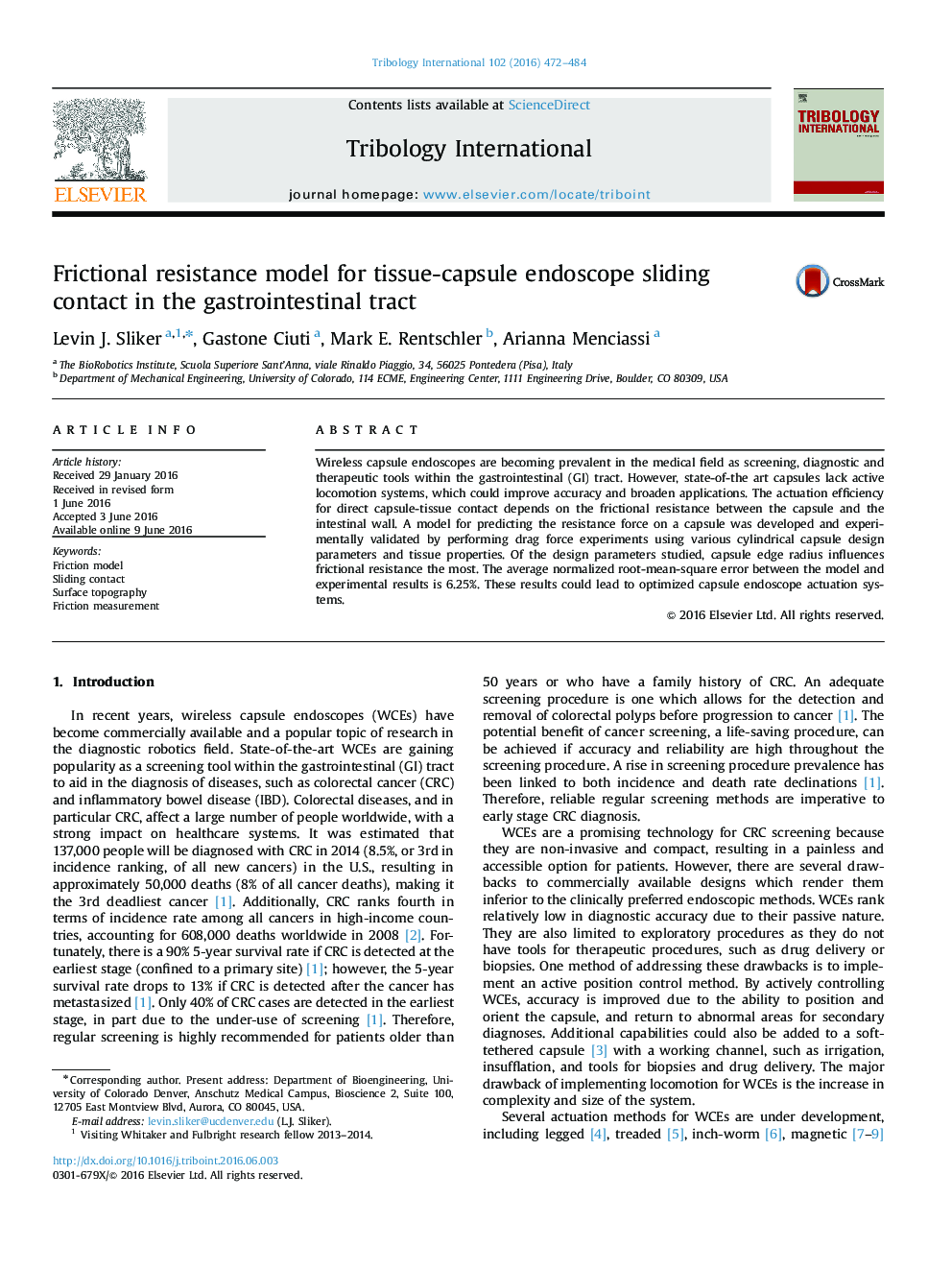| Article ID | Journal | Published Year | Pages | File Type |
|---|---|---|---|---|
| 614131 | Tribology International | 2016 | 13 Pages |
•A model was developed to predict capsule endoscope (CE) frictional resistance.•Drag tests, varying CEs, and tissue parameters were used to validate the model.•The model was validated using excised porcine intestinal tissue from all regions.•Of all parameters studied, edge radius influenced frictional resistance the most.•The model and experimental results exhibited an average error of 6.25%.
Wireless capsule endoscopes are becoming prevalent in the medical field as screening, diagnostic and therapeutic tools within the gastrointestinal (GI) tract. However, state-of-the art capsules lack active locomotion systems, which could improve accuracy and broaden applications. The actuation efficiency for direct capsule-tissue contact depends on the frictional resistance between the capsule and the intestinal wall. A model for predicting the resistance force on a capsule was developed and experimentally validated by performing drag force experiments using various cylindrical capsule design parameters and tissue properties. Of the design parameters studied, capsule edge radius influences frictional resistance the most. The average normalized root-mean-square error between the model and experimental results is 6.25%. These results could lead to optimized capsule endoscope actuation systems.
Graphical abstractFigure optionsDownload full-size imageDownload high-quality image (395 K)Download as PowerPoint slide
